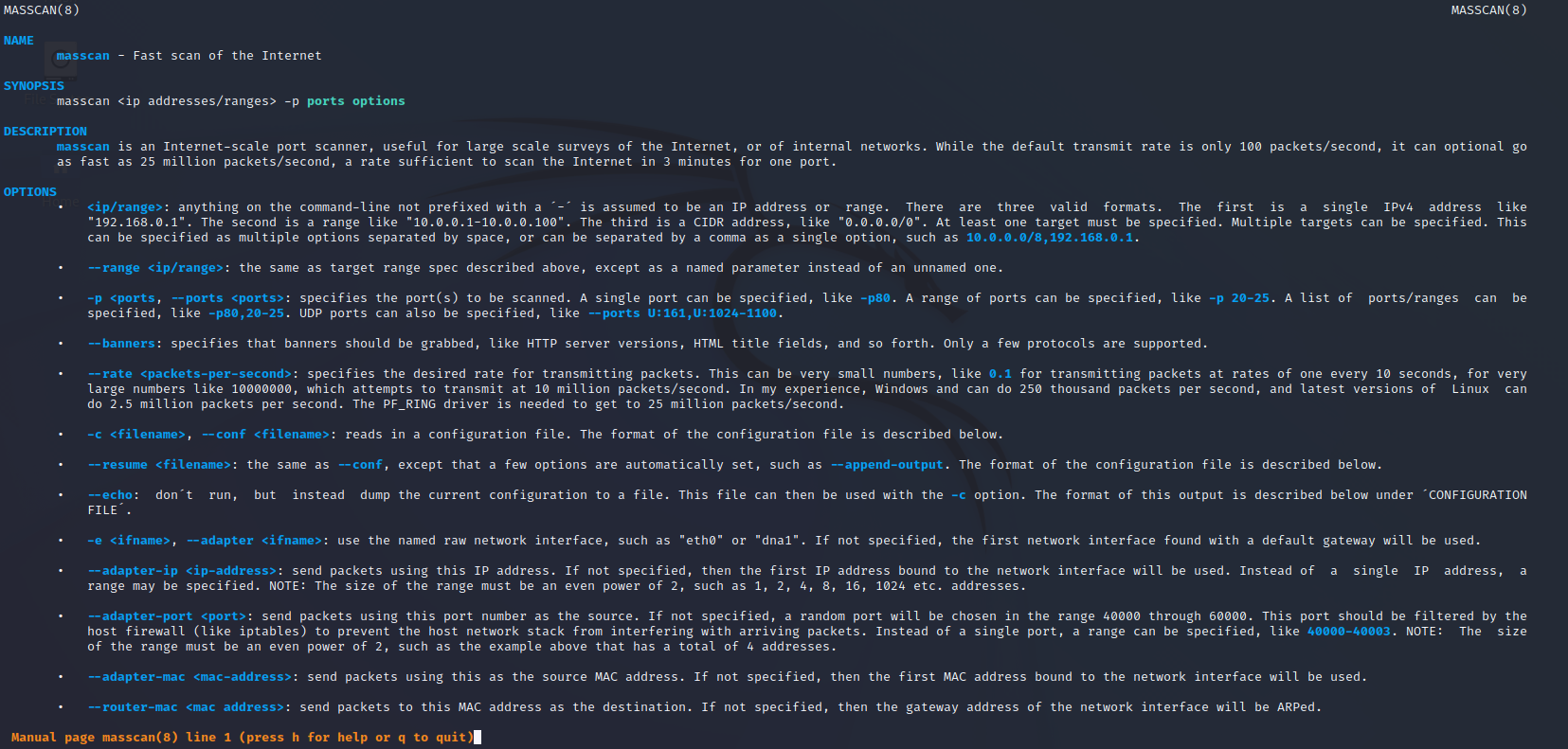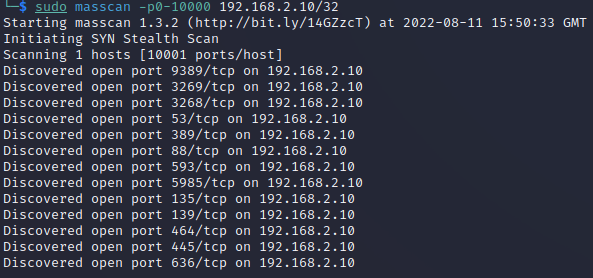1 . Introduction
2 . My Setup
3 . What is Masscan?
4 . Why use Masscan?
5 . How to use Masscan?
6 . Summary
This post is designed to introduce you to the tool Masscan.

1. Introduction
Welcome to the fifty-first blog post of 100 tools in 100 days.
Find Masscan @ GitHub here.
Masscan was created by Robert Graham find their GitHub profile here.
2. My Setup
For running the Masscan tool, I used Kali Linux in a VMware Workstation 16 Player virtualized environment.
For my target environment, I am using a virtualized Active Directory Domain Controller.
3. What is Masscan?
Masscan is a TCP port scanner that searches for open ports on hosts and networks by sending SYN packets and awaiting a handshake response from each host.
4. Why use Masscan?
If you are on a network and need to find other hosts on your network that may have open TCP ports Masscan can do this quickly for you.
Masscan is very noisy in that it will absolutely leave log events on any IDS and you should be aware of this before using it. You could use Masscan to scan the entire internet in a few hours, using this tool for that purpose may be considered illegal in your jurisdiction.
5. How to use Masscan?
Masscan is already installed on Kali Linux, therefore using it is easy.
Step 1:
Enter the following command:
sudo masscan -help

Step 2:
Masscan has a manual page as well which can be accessed by entering:
man masscan

Step 3:
Since I know I am scanning a Domain Controller I am specifying ports of known services:
sudo masscan -p20,21-23,25,53,80,88,110,111,135,138,139,143,389,443,445,464,993,995,1723,3268,3269,3306,3389,5900,8080 192.168.2.10/32

Step 4:
Another option is to specify a range of ports to scan by entering a command like:
sudo masscan -p0-10000 <host>

Masscan can also output the results into various files.
Take a look at some of the file forms from the manual page:

6. Summary
Masscan is a TCP scanner for discovering open ports and hosts on a massive scale. One of the best use case scenarios is using Masscan to scan a large network to discover hosts with a specific open port.
I hope you enjoyed this blog post.
Thanks for reading!
If you have suggestions for what tool to cover next, contact me!